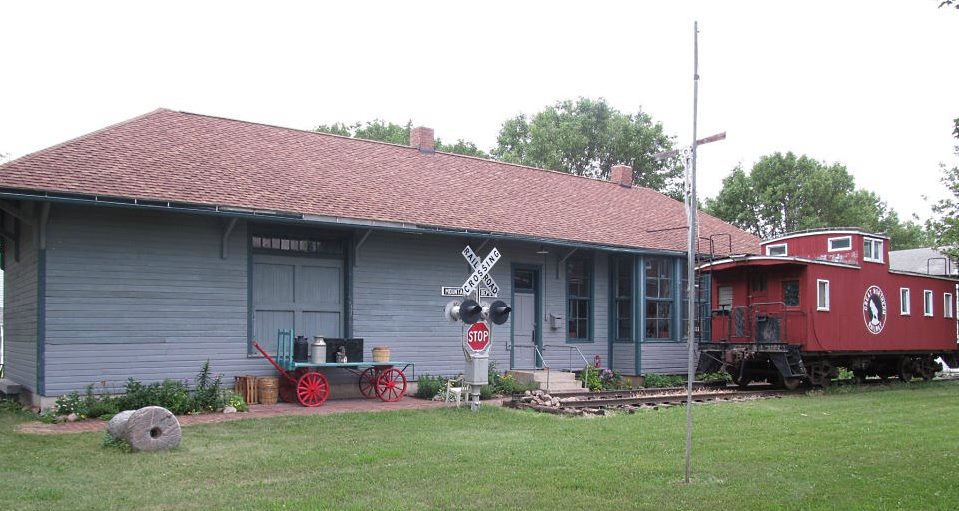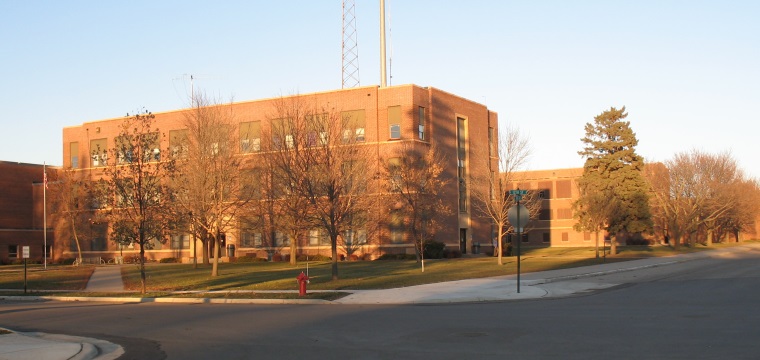MLPS School Board expresses angst over current architect, plan; make plans to discuss ideas with another
The Mountain Lake Public School (MLPS) School Board (Chair Chad Pedersen, Vice-Chair Tom Fast, Clerk Julie Brugman, Treasurer Pam Hoek and Directors Matt Gohr and Tim Swoboda; absent was Director Doug Standerwick), held a special board meeting this evening (Monday), June 12, to discuss the building project recommendation from the Building Committee (Chair Tim Swoboda, Vice-Chair Tom Appel, Cheri Hanson, Jerry Haberman, Bruce Swanson, Bryan Bargen, Vern Peterson, Shawn Naas and John Carrison).
At the meeting, School Board members expressed their angst over architect Paul Youngquist of Architects Rego + Youngquist, Inc. (ARY) of St. Louis Park – and his plan – and elected to invite Mark Lenz of MLA Architects of St. Paul to discuss the way forward with them at their Monday, June 26 regular monthly meeting. MLA Architects was one of four firms that originally presented proposals in April 2015, offering at that time to do the work pro bono.
The motion to arrange the meeting was presented by Director Gohr, seconded by Director Swoboda, and passed unanimously.
An earlier motion by Clerk Brugman and seconded by Treasurer Hoek, to buy out the contract with Youngquist and ARY for $4,850 was defeated 4-2, with Brugman and Hoek voting in the affirmative and Chair Pedersen, Vice-Chair Fast, Gohr and Swoboda casting votes against.
History of the Youngquist project proposal
This past April 26, the Building Committee met and did make a motion to recommend a building project to the School Board for consideration.
A Building Committee subcommittee met May 12 at the requiest of Youngquist to further clarify the proposal to be presented to the School Board.
A special School Board meeting was held with the Building Committee on May 30 to discuss recent developments regarding proposals and the progress of the committee. Although there was considerable discussion regarding recent building project developments, proposals, clarifications and adjustments to the plan approved on April 26 by the Building Committee, no action was taken by the committee to officially modify that recommendation.
For an article on that May 30 meeting, architect proposals and discussion, go to: https://www.cross-countiesconnect.com/2017/05/mlps-school-boardbuilding-committee-holds-joint-meeting-with-architect/
Special meeting discussion
Pedersen opened the Monday, June 12 special meeting with the declaration that he was in search of a clear directive on where we (School Board) are going. “The ag tax credits are there for us to use for any proposal we put forward.” The 2017 Minnesota Legislature passed a 40% tax credit on farm property taxes levied for school district bonding projects. For Mountain Lake, with an ag tax base of 84.5%, that would mean that 40% of the cost for any project would be eliminated due to the ag tax rate.
Hoek was the first to raise questions concerning the architect.”I am all for a building project; but not for the architect we have. Two years later, he has only moved a couple of lines on the drawings. We have six drawings from him and there is nothing different. I don’t think he is right for our school. He is just not answering our questions. This (plan) just doesn’t make sense to me. I don’t like what he has given us; I don’t like his attitude. I have talked to other superintendents and discovered that I am not the only one feeling this way. However, I am open-minded. If the rest of the board decides that this plan is the way to go, I will support it.”
Her sentiments were echoed by Gohr, “To me, the ideas aren’t new; they are just the same.
When asked by Fast what he would like to see different when looking through Youngquist’s proposal, Gohr responded that, “A lot of things we need here (MLPS) are not addressed. The main focus seems to be on the Learning Lab/Commons area. Do we need this? The plan doesn’t seem to have our prioritities in the right place.” Gohr did emphasize that, at least on the local level, good progress has been made on putting necessary priorities in place.
“I pretty much agree with Pam (Hoek),” stated Brugman. “I felt like were making more progress prior to hiring the architect that we have. The best words I have heard came from Matt (Gohr) at the May 30 joint board/committee meeting – ‘This whole thing started from a list of needs expressed by staff and administration and compiled by MLPS Superintendent Bill Strom. Why aren’t we following it?'”
Added Fast, “Since the last meeting (May 30), I have had a couple of thoughts. There has been a lot of work done; a lot of ground has been covered by this Building Committee, as well as the Building Committee that worked on the unsuccessful 2012 building referendum proposal. It turns my stomach, too, that there are just a whole lot of extra in Youngquist’s plan that aren’t on the needs list. We (School District) have gone 30 years without doing anything. What is the priority here? Why can’t we get started on getting some of that done? What can we get by without? In the former indoor pool area we have a structure that would be nice to do something with. It is time to get some of the things on the list knocked off.”
Serving a dual role as Building Committee Chair is Swoboda. He shared that, “Mostly I have been trying to listen to the Building Comittee. We (board) appointed them to do a task for the district. We have great people on that committee. I approached my role on the committee by listening to what their priorities were. A lot of discussion was on what to do with the 1904 building, as well as the pool. The Building Committee did go through the list of priorities and what can be done now – and what can be done over the next 10 years. We don’t need to pay an architect to put new seats in the auditorium. A lot of projects don’t need to be in a referendum. How do we address original building, make improvements for band, choir, security, boilers, locker rooms? The challenge always was to get the cost down to one that could be supported by the community.”
“I’m going to go with my gut,” interjected Brugman. “The 1904 building is structurally sound. Put some TLC (tender loving care) and a little money into it, and it can go for another 50 years. But, I do want to know that we would have good use for the 1904 – and that the price tag to renovate would not be too much.”
School Board members concurred that they would like to see hard numbers on what it would take for that renovation. According to the Minnesota State Fire Marshal, the 1904 building has sturdy, flat floors. “The building envelope is structurally sound,” stated Strom. He went on to note that asbestos abatement and work on the floors of the first floor has already been completed in that building. He added, “We rebuilt the boiler in the building’s basement for $70,000 a year ago.”
In addition, Strom laid out that Carrison had received up-to-code utilities updates for all school classrooms. “In ’15-’16, approximately $498,000 was spent on the have to/need to get done capital projects.”
Strom acknowledged that Youngquist’s presentation at the May 30 meeting was, “very confusing. He did not use the priority items that the people who work in the building had come up with. As far as LTFM (Long-Term Facilities Maintenance), you need an expert to come in and give you reliable numbers. Youngquist doesn’t know what he is talking about.
“You (School Board) hire me to make sure that the best employees are at this school. I have been here 18 years and have been called about teachers who aren’t performing, and now I am listening to you talk about the architect. If I had kept an employee on staff that was talked about the way you are talking about this architect, you would have had my hide.”
From the original list of priorities provided by staff, 73 were considered “high” priority, and 70 “not high” priority. Strom reached out to Mountain Lake Public High School Principal Michelle Larson and Mountain Lake Public Elementary School Principal Karl Wassman to rank out of that total number of 143 items the, “got to, got to, got to have things; no fluff; the most necessary. They reduced that 143 to 44, for a compiled cost of $5.9 million.”
When asked to give his estimation for a total cost for completing the 44 “high” priority projects and renovating the 1904 building, Strom placed that number at between $6-$8 million.
Strom, along with Buildings and Grounds/Maintenance Supervisor and Building Committee member John Carrison, have already completed 23 of the 73 projects deemed most necessary, along with four from the “not high” priority list.
What initially held School Board members back from seeking a second opinion was the time and work put in by the Building Committee to get to this point. Said Pedersen, “He (Youngquist) is the Building Committee’s architect. I am concerned with our PR (personal relations) with the committee. We haven’t even talked to them about this.”
In response, Swoboda shared that, “We (Building Committee) are frustrated that it has taken us a long time to get here. My concern is that if we (School Board) change directions, we will lose some of them (Building Committeem members).”
Brugman recalled that initially the Building Committee favored MLA Architects.
Gohr inserted that, in his discussions with Building Commitee members, “Some of them would be relieved if we don’t go forward. Not all are 100% for this. Maybe some of them will quit – for different reasons – but would not be against any new plan.”
Strom laid out the decision to be made on a building project by board members by explaining to them, “It took the Building Committee two years to get where we are now. You (School Board) have have only two weeks to decide whether to take it further.”
T


















